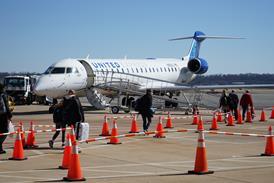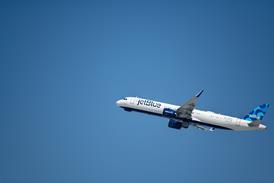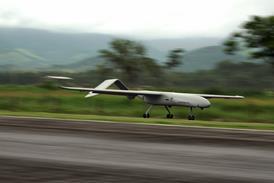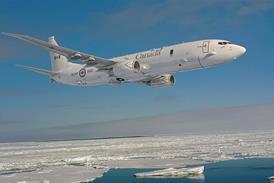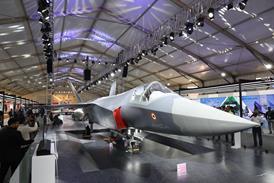Cessna has marked another major milestone in the development of its super-midsize Longitude business jet, following the debut flight on 19 November of the first production-conforming aircraft.
Serial number P1 made its 90min maiden sortie in the skies above Wichita, Kansas, with Cessna pilots Scott Foster and Peter Fisher at the controls. The aircraft will be used for systems testing and envelope expansion.
The debut took place a year after the Longitude was launched, and one month after flight testing of the 12-passenger twinjet began. The first prototype has flown about 70h to date, and Cessna says the programme is on track for certification and service entry in 2017.

Cessna
“In the 12 months since we announced the Longitude, our team has been right on target in meeting the programme milestones,” says Scott Ernest, president and chief executive of Cessna’s parent company, Textron Aviation. “We are coming off of a successful NBAA [convention], where we announced increased performance numbers and debuted the prototype aircraft – all of which are fuelling robust customer interest around the world.”
At NBAA, the business aviation industry’s largest annual gathering, held in Orlando, Florida from 1-3 November, Textron announced an increase in the type’s fuel payload, to 726kg (1,600lb), and a 100nm (185km) boost in the Longitude’s range, to 3,500nm. The improvements will allow operators to fly non-stop on “popular routes”, Cessna says, including from New York to Paris, London to Dubai and Singapore to Sydney.
“The team remains focused,” Ernest says, “ and we are charging into 2017 with great momentum on the programme.”

Cessna
The $24 million Longitude is positioned in Cessna’s 10-strong Citation line-up between the $16.2 million midsize Latitude, which entered service last year, and the $35 million, large-cabin Hemisphere, which is scheduled to make its first flight in 2019.
Powered by Honeywell HTF7700L turbofan engines, the Garmin G5000-equipped Longitude features Cessna’s first use of fly-by-wire technology, with electronically actuated spoilers.
Source: Flight International

